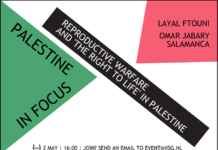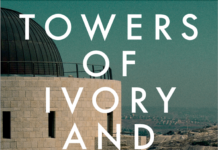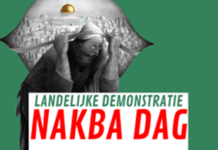Nathaniel St. Clair
CounterPunch / August 16, 2023
For 75 years, Israel has been waging an ideological war to manufacture a legitimacy it does not have. Fissures, however, are now visible in Israel’s carefully crafted and managed narrative.
Since its establishment, Tel Aviv has relied on propaganda to maintain its hold on and to expand its control over Palestine. It has constructed an elaborate state-run public relations industry to market an image acceptable to Western audiences.
Consequently, compelling but fictitious tales of an empty land, agrarian miracles in the desert, and of a small, yet brave democratic state, defending itself against hostile neighbors and terrorists, have become firmly entrenched.
The positive image Tel Aviv had successfully mainstreamed was, however, challenged in 1982 and again in 2009. Israel’s leaders were shaken by the international criticism the country received after the deadly 1982 military attack on Lebanon and massacres in the Palestinian refugee camps of Shabra and Shatila in Beirut.
A year later, to counter the criticism, Israel birthed the Hasbara (explaining in Hebrew) Project to push its agenda and influence how the world, but especially Americans, would think about the country. Today, Israel labels hasbara propaganda “public diplomacy.”
In December 2008 and January 2009, Israel’s image came under scrutiny once again after its massive 22-day bombing campaign of the Gaza Strip, which killed 1,398 Palestinians.
Shortly thereafter, The Israel Project (TIP), a Washington-based group, hired Frank Luntz, a Republican operative and political strategist, to shore up its image. Luntz conducted an extensive study to determine how to integrate Israel’s narrative into mainstream media. His findings were reported in a document titled, “The Israel Project’s 2009 Global Language Dictionary.”
Luntz’s “language dictionary” became a guide on how best to talk about the Zionist state. Language from his primer, with its scripted discourse for Israeli supporters, has seeped into the thinking, vocabulary and comments of American, Israeli and European politicians, academics and mainstream media.
The prefatory statement by TIP founder and president, Jennifer Laszlo Mizrahi, is most revealing. She wrote: “On behalf of our board and team, we offer this guide to visionary leaders who are on the front lines of fighting the media war for Israel. We want you to succeed in winning the hearts and minds of the public.”
Mizrahi’s statement raises the question of why a “democratic state,” which Israel claims to be, would require a media war to win over the public.
In his primer, Luntz coaches Israeli supporters on how to tailor answers for different audiences, outlines what Americans want to hear, what words and phrases to use and those to be avoided. It provides guidance on how to challenge statements from Palestinian supporters and to feign compassion for them.
In his 18-Chapter report, Luntz advises to always emphasize Israel’s desire for peace, although he initially states that Israel’s leaders do not really want a peaceful solution. He writes, “It’s our job to ‘wear white hats in public’—to remind Americans that Israel is a team for whom they can feel good about cheering.”
Israeli supporters are enjoined to give the false impression that the so-called “cycle of violence” has been going on for thousands of years, that both sides are equally at fault and that the Palestine-Israel catastrophe is beyond their understanding.
Advocates are urged to stress Israel’s need for security and its identification with America’s “global war on terrorism.” Americans, the study notes, will respond favorably if Israeli civilians are portrayed as the innocent victims of Palestinian “terrorism.”
Luntz instructs Israeli advocates to paint Hamas and Hezbollah as irrational terrorist threats. He emphasizes that when told Iran supports these groups, Americans will be more inclined to support Israel. Therefore, when talking about them, to repeatedly say “Iran-backed Hamas and Iran-backed Hezbollah.”
Number four of Luntz’s “25 rules for effective communication is especially at odds with reality. To counter and deflect charges of Israeli brutality against Palestinians, he recommends saying, “… civilized people do not target innocent women and children for death.”
According to Defense for Children International Palestine, from January 2000 to July 2023, the Israeli military and Jewish “settler-colonizers” have killed 2,276 Palestinian children in Occupied Palestine. To date, 36 Palestinian children have been killed. In its most recent military attack (July 3 and 4, 2023) on the Jenin refugee camp, Israeli soldiers killed 13 Palestinians, four of them children.
On the rare occasions when the mainstream media reports on Israel’s military occupation of the West Bank and control of Gaza, it conforms to the official lexicon outlined in Luntz’s dictionary. Israel’s army of occupation, for example, is referred to as “defense” or “security” forces. Illegal Jewish colonizers on Palestinian land are termed “settlers.” Zionist colonies are deemed “settlements” or “neighborhoods.” Occupied Palestine is called “disputed territory,” and the theft of Palestinian homes by the Israeli state is described as “evictions.”
News coverage of the military invasion of Jenin by the Israeli occupation forces in July 2023 was just the latest example of the mainstream media’s wariness when it comes to reporting on Palestine-Israel.
Jenin, home to over 23,000 Palestinians, was described in headlines as a “militant stronghold” or a “hotbed of terrorism.” The two-day attack by as many as 2,000 Israeli soldiers, using drones, armored vehicles, rockets and helicopter gunships on unarmed civilians, on their homes, businesses and infrastructure was minimized with benign descriptions of the invasion as a “military operation,” “raid” or “incursion.”
Years of unexamined language that has painted Israel in a positive light have allowed its ongoing colonization of Palestine to be characterized as a “conflict,” and Palestinians resisting Israeli colonization and oppression—which is the legitimate right of the colonized—to be labeled “militants” and “terrorists.”
What is taking place in Occupied Palestine is clearly not a “conflict,” a word which implies a fight between two people with equal political and military resources and equal claims. And while the media perfunctorily describes Israel as a “democratic state,” they avoid using the more accurate “apartheid state” description.
In light of the open racism of Israel’s extremist government, and the unrestrained violence of Jewish “settler-colonists,” the country is finding it increasingly difficult to whitewash its entrenched apartheid system in occupied Palestine. Israel’s hasbara industry in Tel Aviv and the United States, however, remains undaunted.
Although TIP folded in 2019, the Democratic Majority for Israel and other pro-Israel organizations continue their mission of attempting to make the apocryphal real and the fraudulent legal, to normalize the abnormal in Palestine.
Nathaniel St. Clair is CounterPunch‘s photo editor, copy editor, and social media manager












